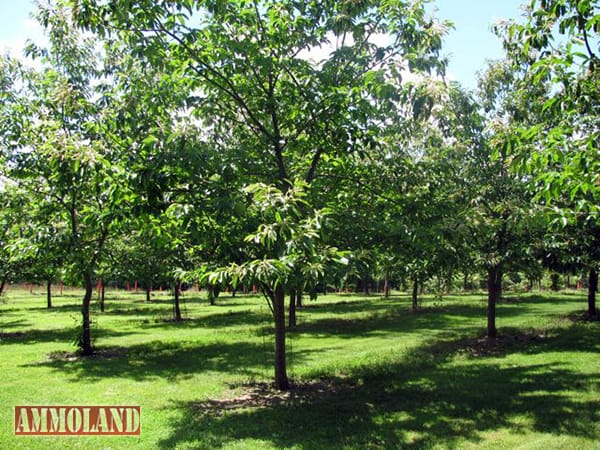

Columbus, GA -(Ammoland.com)- North American whitetails evolved eating sweet, nutritious chestnuts, but when a Chinese blight accidentally introduced in 1904 wiped out the American chestnut trees over the next 40 years, whitetails switched to other hard-mast foods, primarily acorns.
Now, it turns out, if you give deer a choice, they’ll spurn acorns in favor of chestnuts even if they’ve never eaten a chestnut before. Sweeten a food plot with some Dunstan Chestnut Trees, and it won’t take long for the chestnuts to become a favorite food source, attracting and holding deer on your property. Dunstan Chestnut Trees, available from Chestnut Hill Outdoors, provide hunters with the very best food plot tree available.
It began in the 1950s with the discovery of that lone American chestnut tree in Ohio. Dr. Robert T. Dunstan, a well-known plant breeder in Greensboro, N.C., was sent budwood from the tree. He grafted the scions onto chestnut rootstock, and the trees grew well. He cross-pollinated one with superior USDA released Chinese chestnut selections to provide blight resistance.
Now, producing disease-resistant trees that are selling and taking hold in the original chestnuts’ range from Maine to Michigan and south to Florida-and beyond-Chestnut Hill Outdoors is on to something big for wildlife and for hunters. How much do deer like the Dunstan Chestnuts? The company asked top deer researchers to test whether deer preferred chestnuts or acorns. On a Texas ranch, they fed chestnuts side by side with acorns to wild deer. These Texas deer, which had never seen a chestnut before, preferred the chestnuts 100 to 1 to the acorns.
Chestnuts, which have no bitter tannins like acorns, are a sweet meal for deer, and they also provide important nutrition. Chestnuts are about 50 percent carbohydrates, and an acre of chestnut trees can produce as much carbohydrates as an acre of corn. The chestnuts are also about 10 percent protein. Deer seek chestnuts out, and does will train their fawns to eat them.
Chestnut Hill Outdoors sells Dunstan Chestnut seedlings, packaged for easy planting in root-enhancing containers. Holes can be dug with a post-hole digger. The company also supplies Grow Tubes that that keep deer from browsing on the leaves of the young trees and rodents from chewing on the bark.
Landowners who want to enhance a food plot with chestnuts should start with at least two trees, because without cross-pollination, a single tree won’t produce nuts. Trees should be planted at least 30 feet apart to allow the big trees to grow, but within 100 feet of each other to allow the wind to pollinate them. Trees may be planted in spring or fall, and they start producing chestnuts within three to five years.
For more information on Dunstan Chestnuts, the amazing new food plot tree that holds deer on your property and provides a significant nutritional boost, check out www.chestnuthilloutdoors.com .
Contact Chestnut Hill Outdoors directly to place an order by calling (855) 386-7826.
About Chestnut Hill Outdoors
Chestnut Hill is the best place for you to purchase your food plot and deer attractant plants because they offer a large selection, their plants are specifically bred to attract deer, and they offer customers different sized plants at different levels of growth.
